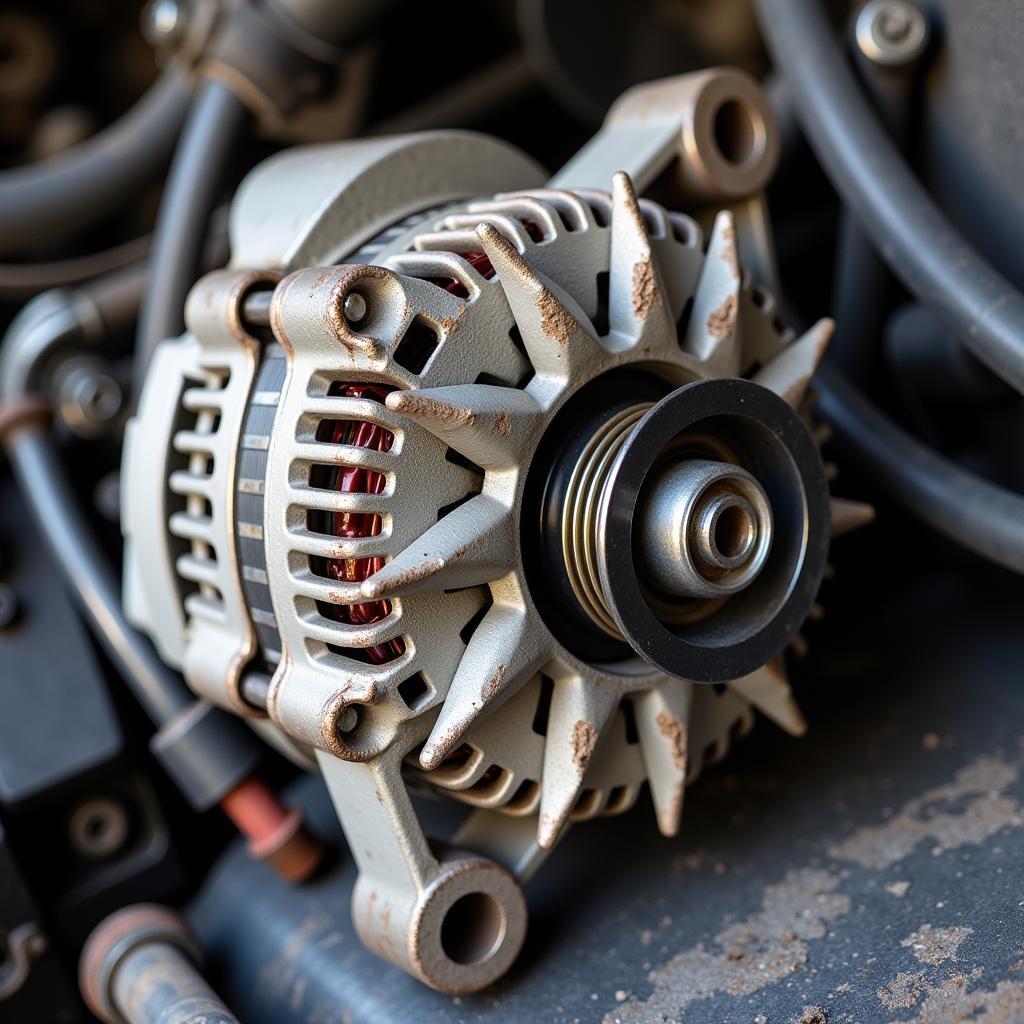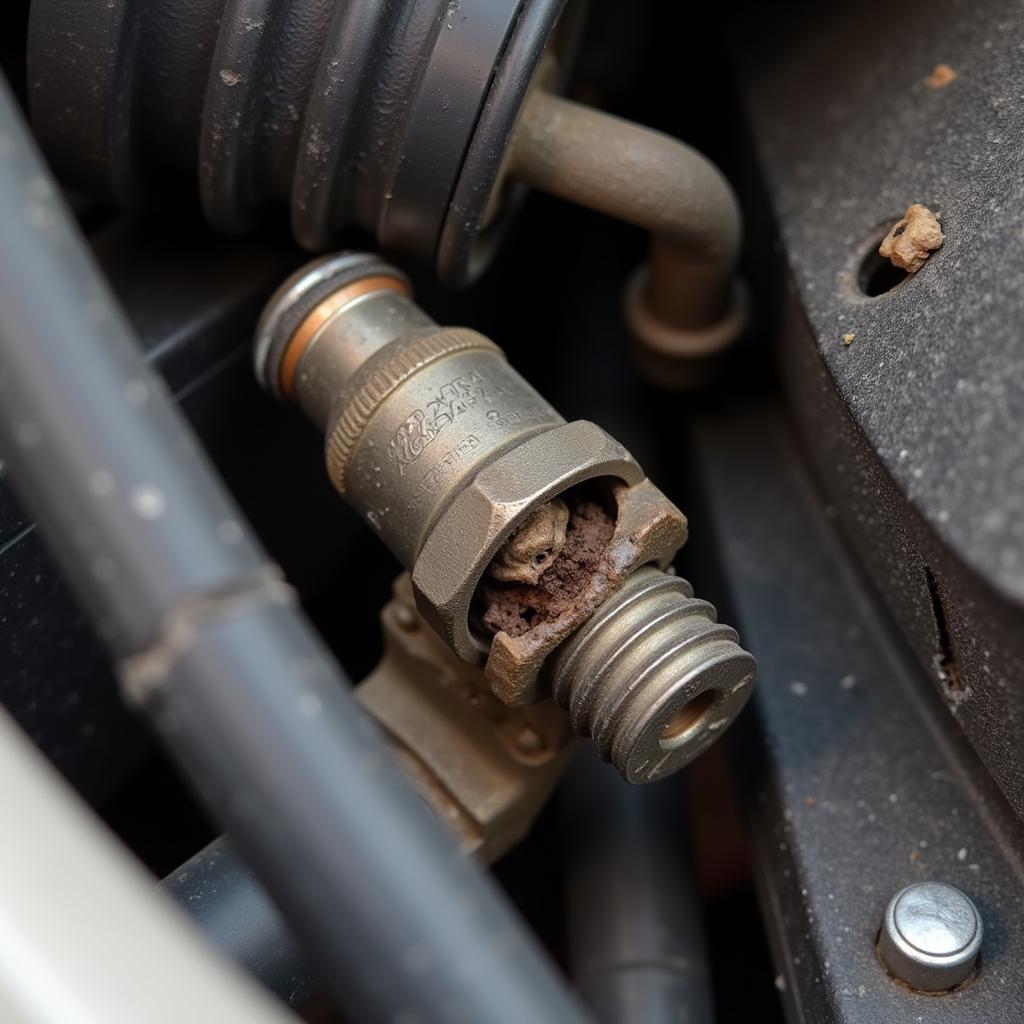A dead battery or dead alternator can leave you stranded. Knowing the difference between these two crucial components and how to diagnose the problem is essential for any driver. This article will guide you through the process of determining whether you’re dealing with a dead battery, a faulty alternator, or another issue entirely. Let’s get started!
Identifying a Dead Battery
A dead battery is a common culprit for a car that won’t start. Signs of a dead battery include:
- Dim headlights or interior lights
- Slow cranking when trying to start the engine
- Clicking sound when turning the key
- Electrical accessories malfunctioning
If your car exhibits these symptoms, it’s possible your battery has reached the end of its lifespan or simply needs a charge. If you’re unsure if you’re dealing with a dead battery vs dead alternator, jump starting your car can help narrow down the problem. If the car starts and runs fine after a jump, the battery is likely the issue. However, if the car dies again shortly after removing the jumper cables, the problem likely lies with the alternator. You can learn more about how to differentiate a dead battery vs dead alternator.
Recognizing a Faulty Alternator
The alternator is responsible for recharging the battery while the engine is running. A failing alternator won’t be able to replenish the battery’s charge, eventually leading to a dead battery and a stalled vehicle. Here are some common indicators of a bad alternator:
- Dim or flickering headlights, especially when accelerating
- Warning light on the dashboard (often a battery symbol)
- Whining or growling noise coming from the engine compartment
- Electrical accessories working intermittently or not at all
A simple test to check the alternator is to start the car with jumper cables (if the battery is dead) and then remove the cables. If the car stalls, the alternator is likely not charging the battery. You can learn more about diagnosing this issue by visiting our article on car battery dead or alternator.
How to Test Your Battery and Alternator
While jump starting can offer a preliminary diagnosis, using a multimeter provides more definitive results.
- Battery Voltage Test: With the engine off, connect the multimeter to the battery terminals. A healthy battery should read around 12.6 volts. A lower reading indicates a discharged or failing battery.
- Alternator Output Test: Start the engine and let it idle. The multimeter reading across the battery terminals should increase to between 13.5 and 14.5 volts, indicating the alternator is charging. If the voltage remains low or continues to decrease, the alternator is likely faulty.
“Using a multimeter is a simple yet effective way to determine the root cause of your car’s starting problems,” says automotive electrical expert, David Miller. “A proper diagnosis can save you time and money in the long run.”
 Inspecting a Car Alternator
Inspecting a Car Alternator
Getting Back on the Road
Once you’ve identified the problem, you can take the necessary steps to get your car running again. If the battery is dead, you can jump-start the car or have it charged. However, a dead car battery vs alternator requires a different approach. If the alternator is faulty, it will need to be replaced. You can find out more about distinguishing between a dead car battery vs alternator on our website.
Is My Car Battery Dead or Is It the Alternator?
It can be challenging to pinpoint the exact cause of car starting issues. For a comprehensive guide to understanding the difference, check out is my car battery dead or is it the alternator. This resource provides a detailed comparison and step-by-step instructions for diagnosing the problem. Also, another helpful resource you may want to consult is dead battery vs alternator.
Conclusion
Knowing how to differentiate between a dead battery or dead alternator is crucial for any car owner. By using the information and diagnostic techniques outlined in this article, you can identify the issue and take the appropriate action to get your car back on the road. Remember, regular maintenance and timely repairs can help prevent these issues from occurring in the future.
FAQ
-
How long does a car battery typically last? Most car batteries last between 3 and 5 years.
-
Can I drive with a bad alternator? You can drive a short distance with a bad alternator, but the battery will eventually drain and the car will stall.
-
How much does it cost to replace an alternator? The cost to replace an alternator varies depending on the make and model of your car, but it typically ranges from $300 to $700.
-
How can I prevent my car battery from dying? Avoid leaving lights or accessories on when the engine is off, and have your battery tested regularly.
-
Can a bad alternator damage my car battery? Yes, a faulty alternator can overcharge or undercharge the battery, leading to premature failure.
-
What are the signs of a dying alternator? Dim or flickering headlights, a warning light on the dashboard, and unusual noises from the engine compartment are common signs of a failing alternator.
-
Is it easy to replace a car battery myself? Replacing a car battery is a relatively simple DIY task for most car owners.


